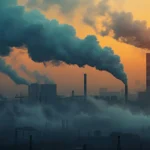Most librarians are familiar with the definitions of open access created in the early 2000’s (and refined several times since) and are passionate about advancing the cause of open. Most researchers, however, are not, and “open” is a relatively low priority for them. Indeed, the growth of “open access” strictly defined has been slow—approaching only 15% of the market total after 15 years of intense advocacy—and the path to more rapid improvement is doubtful.
What can be done to encourage faster development of open and bring more researchers—the creators of content—into this effort? OSI2016 and OSI2017 delegates came up with a novel approach: to expand the open spectrum to better reflect what other kinds of open exist in the marketplace. While the current definition of “open access” doesn’t need to change (free, immediate, and CC-BY), OSI participants suggested that this community can get more knowledge on the path to open by better understanding and embracing what other variations of open exist, why, and what barriers exist (cultural, technical, and more) to making more information more open.
This broad embrace takes the form of acknowledging a “spectrum” of open choices and solutions, including the public access approach (generally, freely accessible following a brief embargo period but not necessarily CC-BY licensed), “imperfect” open solutions (such as free and CC-BY, but following a six-month embargo), and more. Rather than advocating for only one “pure” form of open, the spectrum approach recognizes there are many kinds of approaches to making information more accessible, and all of these fall somewhere on the spectrum of open.
OSI2016 participants (see the “What is Open?” workgroup report at https://sci.institute/2016/06/23/report-from-the-what-is-open-workgroup/) identified four dimensions that have a particular bearing on openness: Discoverability, Accessibility, Reusability, and Transparency (DART). These four DART dimensions exist along a spectrum, rather than as binary values (e.g., yes/no, on/off).
The DART Framework
| Dimension | Attributes include | Description |
|---|---|---|
| Discoverable |
|
This may be the most fundamental baseline condition of open (meaning that if an object is not discoverable, it is not open). However, there is a wide range here, including open with bad metadata or links and no or faulty identifiers. |
| Accessible |
|
Generally drives whether we currently consider something to be open, although many variations exist (taking into account embargoes and other conditions). |
| Reusable |
|
Openness is advanced by having fewer restrictions on reuse, dissemination and modification. |
| Transparent |
|
Serves the research lifecycle, given that outputs of research become inputs. Some of the factors that affect transparency include the software used, inclusion of data, the transparency of the peer review process and analytical methods, and more. |

OSI2017 participants (see the “Standards” workgroup report at https://journals.gmu.edu/osi/article/view/1932/1352) expanded upon this recommendation in noting that “sustainability” should be added as a fifth component of this spectrum.
This model isn’t meant to replace the Open Science Framework designed by the Center for Open Science, or other spectrum models currently being used—just to turn the conversation away from trying to comply with standard that is out of reach, to trying to embrace the multitude of efforts out there that are currently happening in the open space, and to map how they relate to each other, how they compare, where each has room for improvement, and so on. This mapping can take place on many levels—publishers, institutions, disciplines, even countries. As we work to improve access to research information, this approach can help us identify where we need to improve, what areas are lagging (and why), and what approaches work better for different groups (and why).










